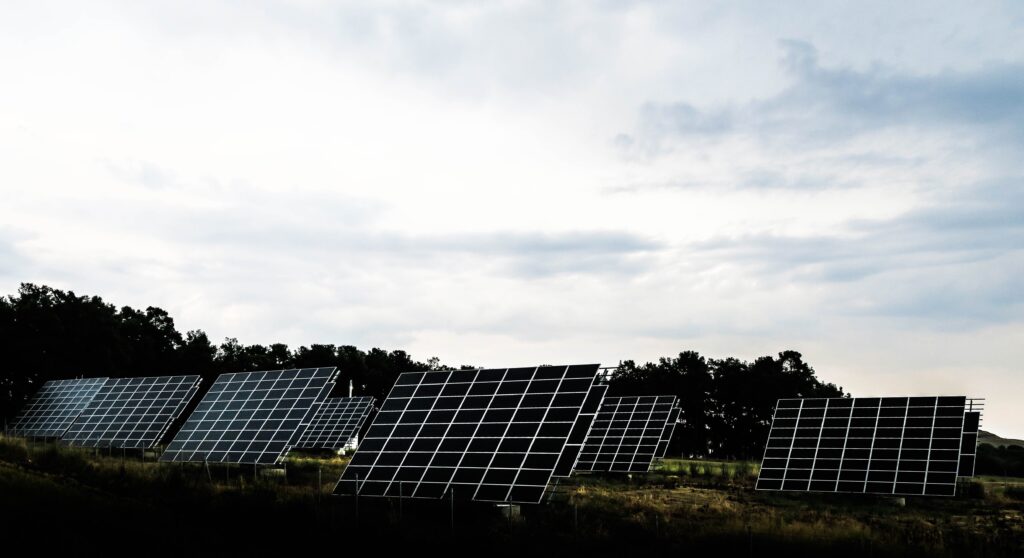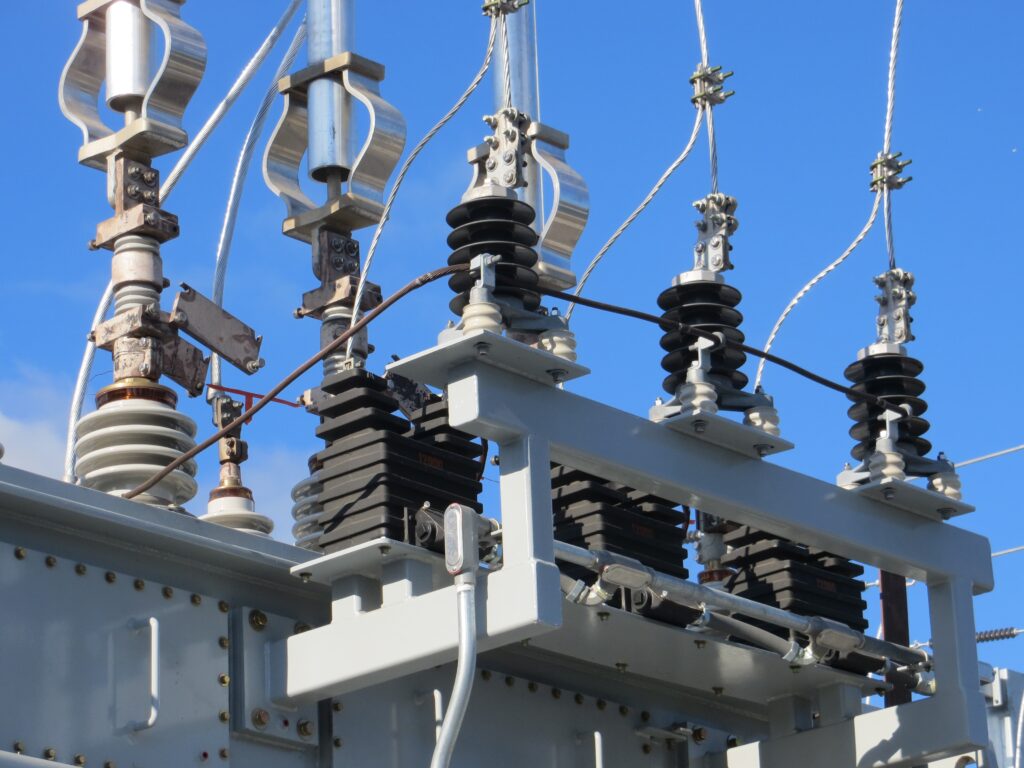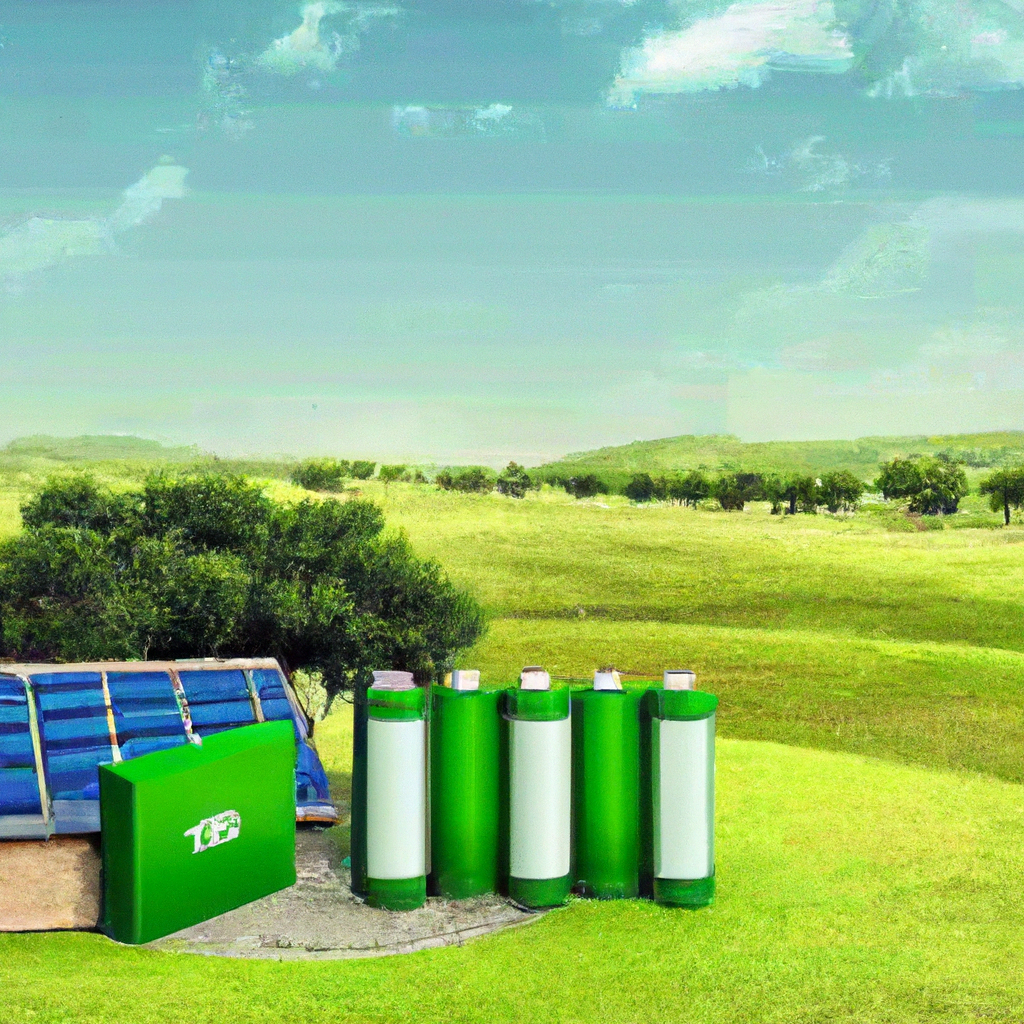What Is The Role Of Energy Storage In Renewable Energy Systems: Introduction
Have you ever asked the question, “What Is The Role Of Energy Storage In Renewable Energy Systems?” In the realm of renewable energy systems, energy storage plays a crucial role in ensuring a sustainable and reliable power supply. With the increasing demand for clean energy sources, such as solar and wind, the need for effective storage solutions has become paramount. Energy storage not only addresses the intermittency challenge that renewable sources often face but also enables the optimal utilization of renewable energy, thereby enhancing grid stability and reducing reliance on fossil fuels. This article explores the significance of energy storage in the context of renewable energy systems and highlights its potential to revolutionize the way we power our world.
Renewable Energy Systems
Renewable energy systems are a vital component in the transition towards a more sustainable and clean energy future. These systems rely on naturally replenishing sources such as sunlight, wind, water, and biomass to generate power. The aim is to reduce our dependency on fossil fuels and mitigate the harmful effects of greenhouse gas emissions.
Importance of Renewable Energy Systems
Renewable energy systems play a crucial role in addressing various global challenges. Firstly, they contribute to reducing greenhouse gas emissions, thus combating climate change. By transitioning to renewable energy sources, we can significantly reduce our carbon footprint and limit the long-term impacts on our planet.
Secondly, renewable energy systems promote energy security and independence. Unlike fossil fuels, which are finite resources that are subject to price fluctuations and geopolitical tensions, renewable energy sources are abundant and widely available. By harnessing these sources, we can reduce our reliance on imported energy and create a more resilient energy infrastructure.
Lastly, renewable energy systems stimulate economic growth and job creation. The development, installation, and maintenance of renewable energy technologies require a skilled workforce, leading to employment opportunities in various sectors. This not only boosts local economies but also fosters innovation and technological advancements.

Check Out Our Top Eco Friendly Product Picks On Amazon Here
Types of Renewable Energy
There are several types of renewable energy sources used in renewable energy systems:
- Solar Energy: One of the most abundant sources of renewable energy, solar power utilizes photovoltaic panels to convert sunlight into usable electricity.
- Wind Energy: Harnessing the power of wind through wind turbines, wind energy is a rapidly growing sector in the renewable energy industry.
- Hydroelectric Power: By harnessing the kinetic energy of flowing water, hydroelectric power plants generate electricity through turbines.
- Biomass: Biomass energy is derived from organic matter such as agricultural waste, forestry residues, and dedicated energy crops. This energy can be used to generate heat and electricity.
- Geothermal Energy: Geothermal systems utilize the heat stored beneath the Earth’s surface to generate electricity or provide heating and cooling for buildings.
- Tidal Energy: Tidal energy converts the natural motion of ocean tides into electricity through tidal turbines.
What is Energy Storage?
Energy storage refers to the process of capturing and storing energy for later use. As intermittent renewable energy sources like solar and wind become more prevalent, energy storage plays a crucial role in ensuring a reliable and flexible energy supply. It enables the decoupling of energy production from energy consumption, allowing for the efficient use and management of renewable energy.

Purpose
The purpose of energy storage systems is to bridge the gap between energy generation and demand. By storing excess energy during periods of low demand or high production, energy storage systems can ensure a continuous and reliable energy supply during peak demand periods or when renewable energy sources are not available.
Additionally, energy storage systems provide flexibility to the grid by balancing fluctuations in supply and demand, addressing intermittency issues associated with renewable energy sources, and enhancing grid stability and reliability.
Types of Energy Storage Systems
There are various types of energy storage systems that cater to different energy requirements and applications:
- Battery Storage: Battery storage systems, such as lithium-ion batteries, store and release electricity in a chemical form. They are commonly used in residential, commercial, and utility-scale applications.
- Pumped Hydro Storage: Pumped hydro storage utilizes two reservoirs at different elevations to store excess electricity by pumping water uphill and releasing it downhill to generate electricity when needed.
- Compressed Air Energy Storage (CAES): In CAES systems, excess electricity is used to compress air and store it in underground caverns. The compressed air is then released, heated, and expanded to generate electricity during periods of high demand.
- Thermal Energy Storage: Thermal energy storage systems store excess heat or cold for later use, providing efficient space heating and cooling solutions.
- Flywheel Energy Storage: Flywheel systems store energy by accelerating a rotor to high speeds and releasing it to generate electricity when needed.
- Hydrogen Storage: Hydrogen can be produced from excess electricity through electrolysis and stored for later use in fuel cells or for various industrial applications.

The Role of Energy Storage in Renewable Energy Systems
Energy storage plays a vital role in renewable energy systems by addressing several key challenges and fulfilling critical functions:
Balancing Supply and Demand
Renewable energy sources, such as solar and wind, are intermittent by nature, as their energy output depends on weather conditions. Energy storage systems help balance the variability in supply and demand by storing excess energy during periods of high production and low demand. This stored energy can then be released during peak demand periods or when renewable energy generation is limited.
Smoothing Intermittency
The intermittent nature of renewable energy sources poses challenges to grid stability and reliability. Energy storage systems help mitigate these challenges by providing a buffer between energy generation and consumption. They can absorb excess energy during periods of oversupply and release it when demand exceeds supply, thereby smoothing out the intermittency associated with renewables.
Grid Stability and Reliability
Energy storage systems contribute to grid stability and reliability by providing ancillary services such as frequency regulation, voltage support, and black start capabilities. These functions help maintain a stable grid by ensuring a constant power supply, balancing the frequency and voltage levels, and restoring power in the event of an outage.
Benefits of Energy Storage in Renewable Energy Systems
The integration of energy storage systems into renewable energy systems brings several benefits:
Increased Reliability
Energy storage enhances the reliability of renewable energy systems by mitigating the intermittency and variability of renewable energy sources. By storing excess energy and releasing it when needed, energy storage systems provide a consistent and reliable energy supply.
Optimized Use of Renewable Energy
Energy storage allows for the optimal utilization of renewable energy by capturing excess energy during periods of low demand or high production. This stored energy can be used during peak demand periods or when renewable energy generation is constrained, maximizing the utilization of available resources.
Cost Savings
Energy storage systems can reduce energy costs by minimizing the need for additional power generation during peak demand periods. By using stored energy, grid operators can avoid costly investments in new power plants or infrastructure upgrades.
Reduced Emissions
By enabling the increased integration of renewable energy sources, energy storage systems contribute to a significant reduction in greenhouse gas emissions. The utilization of clean and sustainable energy sources, coupled with energy storage, helps in decarbonizing the energy sector and combating climate change.

Challenges and Limitations of Energy Storage in Renewable Energy Systems
While energy storage holds great promise, there are several challenges and limitations that need to be addressed:
Technological Limitations
No energy storage technology is perfect, and each has its limits. The performance, efficiency, and cost-effectiveness of energy storage systems vary depending on the technology and application. Further advancements and innovations are needed to improve the performance and overcome technical limitations.
Cost
Energy storage technologies can be expensive, particularly for large-scale applications. The upfront costs, maintenance expenses, and lifetime costs of energy storage systems need to be carefully considered to ensure their economic feasibility.
Environmental Impact
The environmental impact of energy storage systems, such as the materials used in batteries or the land and water requirements for pumped hydro storage, should be taken into account. Careful planning and consideration of the environmental consequences are necessary to ensure sustainable and responsible energy storage practices.
Future Prospects and Innovations in Energy Storage for Renewable Energy Systems
The future of energy storage for renewable energy systems holds great potential for advancements and innovations:
Advancements in Battery Technology
Battery technology, especially lithium-ion batteries, is continuously evolving. Ongoing research and development efforts aim to improve energy density, increase efficiency, enhance lifespan, and reduce costs. These advancements will facilitate the widespread deployment of batteries both at the grid-scale and in residential applications.
Evolving Grid Integration
As the share of renewable energy in the electricity mix continues to grow, the integration of energy storage systems with the grid becomes increasingly critical. Innovations in grid management and control systems, including smart grids and demand response programs, will enable more efficient and seamless integration of energy storage in renewable energy systems.
Hydrogen Storage
Hydrogen storage is gaining attention as a potential energy storage solution due to its high energy density and versatility. Advances in hydrogen production, storage, and utilization technologies could enable the scalable deployment of hydrogen storage systems, contributing to the integration of renewable energy at a larger scale.
Emerging Technologies
There are various emerging energy storage technologies undergoing research and development. These include flow batteries, supercapacitors, and thermal storage systems. Continued research and investment in these emerging technologies have the potential to unlock new possibilities for energy storage in renewable energy systems.

Examples of Energy Storage in Renewable Energy Systems
There are already successful examples of energy storage in renewable energy systems:
Battery Storage in Solar PV Systems
Residential and commercial solar PV systems often incorporate battery storage to store excess energy for use during periods of low solar irradiance. These systems provide homeowners and businesses with increased energy independence, protection against power outages, and the ability to optimize their solar energy utilization.
Pumped Hydro Storage
Pumped hydro storage is currently the most widespread form of grid-scale energy storage. Reservoirs with different elevations are used to store and release water to generate electricity when needed. Pumped hydro storage systems can store large amounts of energy, provide long-duration storage, and contribute to grid stability and reliability.
Compressed Air Energy Storage
Compressed air energy storage (CAES) is another form of grid-scale energy storage. It uses electricity to compress air and store it in underground caverns. When energy is needed, the compressed air is released, heated, and expanded to drive turbines and generate electricity. CAES systems are capable of providing both long-duration and fast response storage.
Policy and Regulatory Implications
The increasing reliance on renewable energy sources like solar and wind power has emphasized the critical role that energy storage systems play in ensuring a stable, reliable, and efficient energy supply. These systems allow for the capture and release of energy, thereby balancing fluctuations and filling gaps when the renewable sources are unable to generate electricity. Therefore, implementing policies and regulations that effectively guide the integration of energy storage in renewable energy systems is of paramount importance. There are several key areas that need attention:
Integration of Energy Storage in Renewable Energy Policies
To accelerate the transition to cleaner energy solutions, policy frameworks need to be holistically designed with an emphasis on the integral role that energy storage systems play in renewable energy setups. At the policy-making level, it is essential that lawmakers and industry stakeholders collaborate to develop guidelines that are tailored to meet the specific requirements and limitations of energy storage technologies, whether they be lithium-ion batteries, flow batteries, or pumped hydro storage.
Providing incentives to consumers and producers alike can stimulate research, development, and deployment of these systems. Streamlining the permitting processes for installing energy storage can also reduce bureaucratic obstacles and time delays, thereby making it easier for companies and households to adopt these technologies. Establishing clear, comprehensive regulations for grid connection ensures that the benefits of energy storage systems can be optimized for grid reliability and resilience. There is a dire need for regulations that are flexible yet robust enough to adapt to rapidly advancing technologies.
Incentives and Support Programs
One of the biggest hurdles in the widespread adoption of energy storage systems is the initial cost of investment. Implementing financial incentives and support programs like tax credits, grants, and subsidies can mitigate these financial barriers significantly. These incentives not only make energy storage systems more accessible to the average consumer but also make them more appealing to corporate investors and stakeholders.
By stimulating market growth, these financial instruments can lead to economies of scale, further reducing the cost of energy storage technologies in the long run. Additionally, incentive programs could focus on specific applications of energy storage, such as grid stabilization or emergency backup, to drive innovation in areas most needed. To be truly effective, these programs need to be regularly reviewed and updated to ensure they align with the evolving landscape of energy storage technologies and renewable energy production capabilities.
Financial incentives and support programs are critical levers that governments can use to facilitate the adoption of energy storage solutions. These programs not only lower the entry barrier for various stakeholders but also foster an environment conducive for innovation and scale. Here are examples from around the world, broken down by country:
United States – Investment Tax Credit (ITC)
In the United States, one of the most impactful financial incentives for both renewable energy and energy storage is the Investment Tax Credit (ITC). Initially designed to encourage solar energy adoption, the ITC allows homeowners and businesses to deduct a significant percentage of the cost of installing a solar energy system from their federal taxes. Over the years, the scope of the ITC has expanded to include energy storage systems when they are paired with renewable energy sources like solar or wind.
By offering a tax incentive, the ITC effectively reduces the upfront capital costs, making the technology more accessible to a broader range of consumers and investors. This program has been extremely successful in driving the adoption of renewable energy and has set a precedent for integrating energy storage systems. It has enabled a more decentralized energy production system, empowered individual consumers, and bolstered energy security.
Germany – KfW Renewable Energy Storage Program
Germany has been a pioneer in the field of renewable energy, and this extends to their focus on energy storage solutions. The KfW Renewable Energy Storage Program offers low-interest loans and grants to residential and commercial customers who invest in solar plus storage systems. Through this program, KfW Bankengruppe aims to make renewable energy more effective and efficient by ensuring that energy can be stored and used when needed, rather than only when it is generated.
This program has not only led to greater efficiency in the utilization of renewable energy but has also helped Germany come closer to its ambitious climate goals. The success of this program has spurred further innovation in energy storage technology, thereby reducing costs and increasing the range of feasible applications.
Australia – Home Battery Scheme
Australia’s Home Battery Scheme is aimed at homeowners and offers subsidies for the installation of home battery systems. By encouraging residential energy storage, the Australian government hopes to reduce electricity costs for consumers, lower carbon emissions, and enhance grid stability.
Depending on the energy capacity of the battery and other parameters, the subsidy can substantially offset the initial costs of installing an energy storage system. This program has been well-received as it empowers homeowners to be less reliant on the grid, thereby contributing to local and national sustainability objectives.
South Korea – Renewable Portfolio Standard (RPS)
South Korea’s Renewable Portfolio Standard (RPS) obliges utility companies to produce a certain percentage of their energy from renewable sources, and it has been amended to give extra credits to those utilizing energy storage systems. By doing so, South Korea aims to integrate more renewable energy into its grid while also promoting the use of energy storage.
This incentive pushes utility companies to invest in renewable energy and storage solutions, thereby driving demand for these technologies. As a result, the country has seen a significant increase in the deployment of energy storage systems, as utility companies vie to meet the RPS requirements.
India – Faster Adoption and Manufacturing of Hybrid and Electric Vehicles (FAME)
India’s FAME program initially aimed to accelerate the adoption of electric vehicles but has now expanded to include stationary energy storage solutions. It offers various financial incentives like subsidies and grants to encourage the manufacturing and deployment of energy storage systems.
By incorporating stationary energy storage into the FAME program, India hopes to bolster its renewable energy sector and reduce its carbon footprint. The program aims to make energy storage solutions more economically viable in the country, thereby stimulating both supply and demand.
Each of these examples demonstrates how well-crafted incentives and support programs can significantly boost the adoption of energy storage systems. By studying the successes and challenges of these programs, other countries can develop more effective policies for encouraging the integration of energy storage into renewable energy systems.
Grid Connection and Interoperability
The benefits of energy storage systems are significantly diminished if they cannot be easily and efficiently integrated with existing grid infrastructure. Policymakers and regulators must work together to establish technical standards, grid codes, and communication protocols that facilitate seamless interaction between energy storage devices, renewable energy sources, and the electricity grid at large.
Ensuring that these systems can “talk” to each other through standardized communication protocols is essential for real-time energy management and grid stabilization. Proper guidelines should also be in place to determine how energy storage assets are classified and how they can participate in electricity markets. This could mean establishing rules that allow energy storage to sell excess energy back to the grid, thereby creating additional revenue streams for storage operators.
Interoperability also implies future-proofing these standards so they can evolve along with technological advancements. By having a clear regulatory framework, stakeholders can confidently invest in energy storage solutions, knowing that their systems will be compatible with the broader energy infrastructure for years to come.
In summary, the policy and regulatory landscape plays a crucial role in determining the success of integrating energy storage systems with renewable energy sources. By addressing these key areas—integration in policy frameworks, financial incentives, and grid connectivity—governments and industry can pave the way for a more sustainable, reliable, and efficient energy future.
Conclusion
Energy storage plays a pivotal role in renewable energy systems by enabling the reliable and efficient utilization of renewable energy sources. It addresses the challenges posed by intermittency, improves grid stability, and offers numerous economic and environmental benefits. While there are challenges and limitations to overcome, ongoing advancements in technology and policy support will continue to drive the widespread adoption of energy storage in renewable energy systems. With further innovations and investments, energy storage will play a crucial role in accelerating the transition to a sustainable, low-carbon future.




